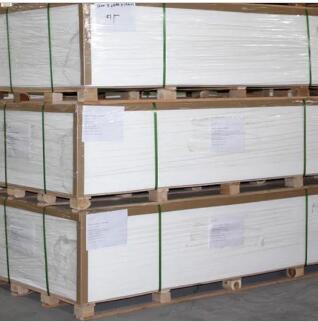Understanding the Manufacturing Process of Low Density PVC-Free Foam Board
2024-08-29
Low density PVC-free foam board has emerged as a popular material for various applications due to its eco-friendly properties, versatility, and durability. But what goes into the production of this innovative material? In this blog, we’ll take a closer look at the manufacturing process of low density PVC-free foam board, exploring how it is made, the materials involved, and the steps that ensure it meets the high standards required for diverse uses.
The Raw Materials: Sustainable and Safe
The manufacturing process of low density PVC-free foam board begins with the selection of raw materials. Unlike traditional PVC foam boards, which rely heavily on polyvinyl chloride, PVC-free boards use alternative polymers that are safer and more environmentally friendly. Commonly used polymers include polyethylene (PE), polypropylene (PP), and other thermoplastics that offer similar physical properties to PVC but with a reduced environmental footprint.
In addition to the primary polymer, the formulation may include additives such as:
- Foaming Agents: These are chemical compounds that help create the foam structure by generating gas bubbles within the polymer matrix during processing. The choice of foaming agent can impact the density, strength, and flexibility of the final product.
- Stabilizers: These additives are used to improve the thermal stability of the polymer during processing, ensuring that the material maintains its properties when exposed to heat.
- Colorants: Pigments or dyes are added to achieve the desired color of the foam board, which can be either white, colored, or even translucent, depending on the application.
The Extrusion Process: Forming the Foam Board
Once the raw materials are prepared, the next step in the manufacturing process is extrusion. Extrusion is a continuous process that shapes the polymer into the desired foam board form while incorporating the foaming agent to achieve the low density structure.
1. Mixing and Melting:
The raw materials, including the base polymer, foaming agent, and any additives, are fed into an extruder. Inside the extruder, the materials are heated and mixed thoroughly to form a homogeneous melt. The temperature and pressure within the extruder are carefully controlled to ensure that the polymer melts evenly without degrading.
2. Foaming and Shaping:
As the polymer melt exits the extruder, it passes through a die, which shapes it into a flat sheet. At this stage, the foaming agent activates, creating gas bubbles within the polymer matrix. These bubbles expand, giving the material its characteristic low density and lightweight structure. The thickness and density of the foam board can be adjusted by controlling the extrusion parameters and the amount of foaming agent used.
3. Cooling:
After extrusion, the foam board is rapidly cooled using air or water to solidify its shape. Cooling is a critical step that helps stabilize the foam structure and prevent deformation or shrinkage.
4. Cutting and Finishing:
Once the foam board has cooled, it is cut into sheets of the desired size and thickness. Additional finishing processes, such as surface treatment or lamination, may be applied depending on the intended application. For example, the surface may be smoothed or textured to enhance printability, or a protective layer may be added to improve durability.
Quality Control: Ensuring Consistency and Performance
To ensure that low density PVC-free foam board meets the required standards, rigorous quality control measures are implemented throughout the manufacturing process. These measures include:
- Density Testing: The density of the foam board is measured to ensure it falls within the specified range. Consistent density is crucial for maintaining the material's strength, durability, and weight characteristics.
- Dimensional Accuracy: The thickness and dimensions of the foam board are checked to ensure they meet the specified tolerances. Accurate dimensions are essential for applications where precision is required, such as in signage or construction.
- Surface Quality: The surface of the foam board is inspected for defects such as bubbles, cracks, or discoloration. A smooth, defect-free surface is important for applications that require high-quality printing or finishing.
- Performance Testing: Depending on the intended use, the foam board may undergo additional performance tests, such as impact resistance, moisture absorption, and thermal stability testing.
Environmental Considerations: A Greener Choice
One of the key benefits of low density PVC-free foam board is its reduced environmental impact compared to traditional PVC boards. The use of alternative polymers minimizes the release of harmful chemicals during production and disposal. Additionally, many manufacturers are committed to sustainable practices, such as using recycled materials, reducing energy consumption, and minimizing waste during production.
Moreover, some PVC-free foam boards are recyclable, contributing to a circular economy and reducing the burden on landfills. By choosing PVC-free foam board, consumers and businesses can play a role in reducing their environmental footprint while still benefiting from a high-performance material.
Conclusion
The manufacturing process of low density PVC-free foam board is a sophisticated and carefully controlled operation that results in a versatile, durable, and eco-friendly material. From the selection of sustainable raw materials to the precision of the extrusion process and rigorous quality control, every step is designed to produce a foam board that meets the needs of various industries. As the demand for environmentally responsible materials continues to grow, low density PVC-free foam board is set to play an increasingly important role in construction, signage, and beyond.



